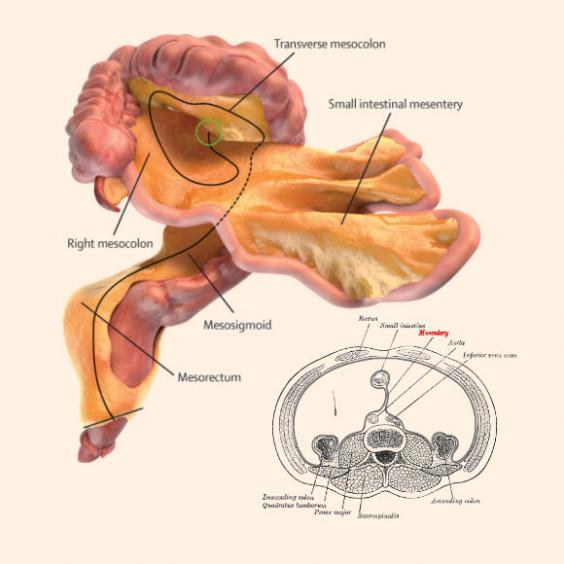Also on Wikipedia
Search results
Mesentery : New organ discovered inside human body by scientists (and now there are 79 of them)
A new organ has been discovered hiding in plain sight inside the human body. Known as the Mesentery, it was previously thought to be just a few fragmented structures in the digestive system. But scientists have realised it is in fact one, continuous organ. Although its function is still unclear, the discovery opens up “a whole new area of science,” according to J Calvin Coffey, a researcher at the University Hospital Limerick who first discovered it.
"When we approach it like every other organ… we can categorise abdominal disease in terms of this organ," he said.“Now we have established anatomy and the structure. The next step is the function. If you understand the function you can identify abnormal function, and then you have disease.
“Put them all together and you have the field of mesenteric science.” The research has been published in The Lancet medical journal. Following its reclassification, medical students are now being taught that the mesentery is a distinct organ. Gray’s Anatomy, the world’s most famous medical textbook, has been updated to include the new definition.

A digital representation of the mesentery and small and large intestines (J Calvin Coffey, D Peter O’Leary, Henry Vandyke Carter). Medical students and researchers can now investigate what role the mesentery might play in abdominal diseases, which it is hoped could ultimately lead to new treatments. The organ is a double fold of peritoneum - the lining of the abdominal cavity - that holds our intestine to the wall of our abdomen. It was described by the Italian polymath Leonardo da Vinci in 1508, but it has been ignored throughout the centuries, until now.
Although there are generally considered to be five organs in the human body, there are in fact now 79, including the mesentery. The heart, brain, liver, lungs and kidneys are the vital organs, but there are another 74 that play a role in keeping us healthy.
- Post By : TASA
Hubble gazes at a cosmic 'megamaser'
This galaxy has a far more exciting and futuristic classification than most -- it hosts a megamaser. Megamasers are intensely bright, around 100 million times brighter than the masers found in galaxies like the Milky Way. The entire galaxy essentially acts as an astronomical laser that beams out microwave emission rather than visible light (hence the 'm' replacing the 'l').
A megamaser is a process that involves some components within the galaxy (like gas) that is in the right physical condition to cause the amplification of light (in this case, microwaves). But there are other parts of the galaxy (like stars for example) that aren't part of the maser process.
This megamaser galaxy is named IRAS 16399-0937 and is located over 370 million light-years from Earth. This NASA/ESA Hubble Space Telescope image belies the galaxy's energetic nature, instead painting it as a beautiful and serene cosmic rosebud. The image comprises observations captured across various wavelengths by two of Hubble's instruments: the Advanced Camera for Surveys (ACS), and the Near Infrared Camera and Multi-Object Spectrometer (NICMOS).
NICMOS's superb sensitivity, resolution, and field of view gave astronomers the unique opportunity to observe the structure of IRAS 16399-0937 in detail. They found it hosts a double nucleus -- the galaxy's core is thought to be formed of two separate cores in the process of merging. The two components, named IRAS 16399N and IRAS 16399S for the northern and southern parts respectively, sit over 11,000 light-years apart. However, they are both buried deep within the same swirl of cosmic gas and dust and are interacting, giving the galaxy its peculiar structure.
The nuclei are very different. IRAS 16399S appears to be a starburst region, where new stars are forming at an incredible rate. IRAS 16399N, however, is something known as a LINER nucleus (Low Ionization Nuclear Emission Region), which is a region whose emission mostly stems from weakly-ionized or neutral atoms of particular gases. The northern nucleus also hosts a black hole with some 100 million times the mass of the sun!
Subscribe to:
Comments
(
Atom
)

